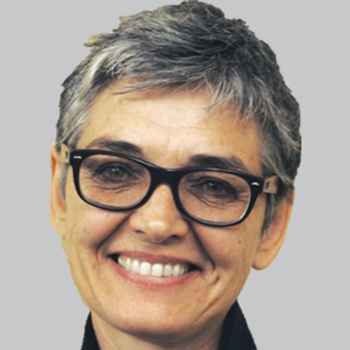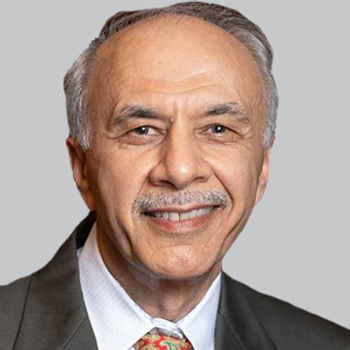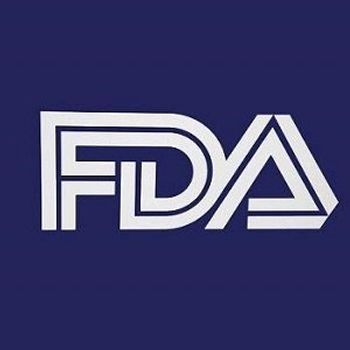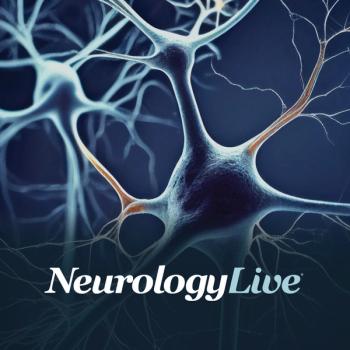
Nicholas Johnson, MD, MSci, FAAN, division chief of neuromuscular disorders and vice chair of research, Virginia Commonwealth University, provided insight on promising phase 1/2 data of AOC 1001 in myotonic dystrophy type 1.

Marco Meglio, Assistant Managing Editor for NeurologyLive, has been with the team since October 2019. Follow him on Twitter @marcomeglio1 or email him at [email protected]

Nicholas Johnson, MD, MSci, FAAN, division chief of neuromuscular disorders and vice chair of research, Virginia Commonwealth University, provided insight on promising phase 1/2 data of AOC 1001 in myotonic dystrophy type 1.

Poor higher order vision at baseline was associated with worsening cognition and increased probability of death, dementia, or frailty over 3 years.

Digital technologies like the DCTclock are revolutionizing the way clinicians across all specialties can quickly assess for cognitive decline, an issue in today's aging society.

In a subgroup of individuals with secondary progressive MS, 50% of patients on mesenchymal stem cell-neural progenitor therapy improved muscle strength compared with 33% of those on placebo.

In addition to increased risk of dementia, focal epilepsy was associated with widespread structural brain change reflected by lower total hippocampal and total gray matter volume.

Teriflunomide, an FDA-approved therapy for relapsing forms of multiple sclerosis, resulted in an 62% risk reduction relative to placebo in preventing a first clinical event in patients with RIS.

Designed for self-directed use in a patient’s home or a healthcare facility, the Cumulus EEG device has potential to change the clinical trial landscape, allowing researchers to conduct more remote studies.

Over 48 weeks of treatment, ALXN1480 was found to be generally well-tolerated, with improvements seen in Clinical Global Impression-Improvement scores and UWDRS Parts II and III.

The 2-part study is intended to first establish safety and tolerability of multiple doses of CK0803, followed by efficacy analyses on several known ALS outcome measures.

For those with an intermediate level of tau and clinical symptoms of Alzheimer disease, treatment with donanemab resulted in a 39% lower risk of progressing to the next stage of disease relative to placebo.

The chief scientific officer at Alzheon discussed new, positive 12-month findings on ALZ-801, an investigational agent in development for patients with early-stage Alzheimer disease.

Total disease burden, measured by the Facioscapulohumeral Muscular Dystrophy Health Index, was reduced by 19% over a 24-week period on recombinant human growth hormone.

Higher adherence to Mediterranean Diet Adherence Screener independently predicted 20% lower risk for cognitive impairment among patients with MS.

Although it has the same ingredients as previously approved Xyrem, extended-release sodium oxybate is a medication taken once-nightly instead of twice-nightly.

A statistically significantly higher proportion of patients, both with and without predose aura, achieved 2-hour relief of the most bothersome symptom with zavegepant.

In a subgroup of individuals with Huntington disease with high baseline C4a/C4 levels, treatment with ANX005 resulted in significant improvement in composite Unified Huntington’s Disease Rating Scale across all timepoints.

Kimberly O’Neill, MD, pediatric neuroimmunology fellow at NYU Langone, discussed her presentation at the 2023 AAN Annual Meeting focused on cognitive similarities between pediatric and adult MS.

Q-Motor, an objective measure of motor function, showed robust beneficial effects for individuals treated with pridopidine in PROOF-HD at various time points.

After 66 weeks of treatment, patients on eplontersen showed sustained reduction in TTR concentration, halted progression of neuropathy impairment, and improved quality of life.

In comparison with placebo, atogepant 30 mg twice daily and 60 mg once daily resulted in greater reductions in monthly migraine days, as well as proportion of patients with at least 50% reduction in 3-month average of MMDs.

A greater proportion of patients on ubrogepant reported absence of moderate-to-severe intensity headache within 48 hours, ability to function normally, and absence of headache of any intensity.

The president elect of the Association of University Professors of Neurology provided thoughts on the promising concepts in neurology and the reasons young medical professionals should join the field.

In single-ascending dose and multiple-ascending dose studies, no clinically meaningful changes were noted in hematology, chemistry, vital signs, or electrocardiogram parameters.

After 192 weeks, more than 90% of patients on ocrelizumab had no relapses and slightly more than 80% had no 24-week confirmed disability progression.

Mind Moments®, a podcast from NeurologyLive®, brings you an exclusive interview with Angela Genge, MD, FRCPC. [LISTEN TIME: 13 minutes]

Branded as Qalsody, the FDA has granted approval to Biogen and Ionis' tofersen, making it the fourth therapy approved for ALS and the first for SOD1-associated disease.

No significant differences between P2B001 and Prami-ER were seen in total UPDRS responders, UPDRS Part II, and UPDRS Part III scores among those with Parkinson disease.

Adverse events like dyskinesia, ON and OFF phenomenon, and falls, were all higher during the 4-week optimization phase than the 8-week maintenance phase.

FDA-approved for adults with generalized myasthenia gravis in 2016, eculizumab continued to show promising efficacy and safety responses in adolescents with the disease, regardless of on concomitant use of IVIG.

After 228 weeks of treatment, annualized relapse rates favored twice-daily 75 mg dosing of evobrutinib vs once-daily.